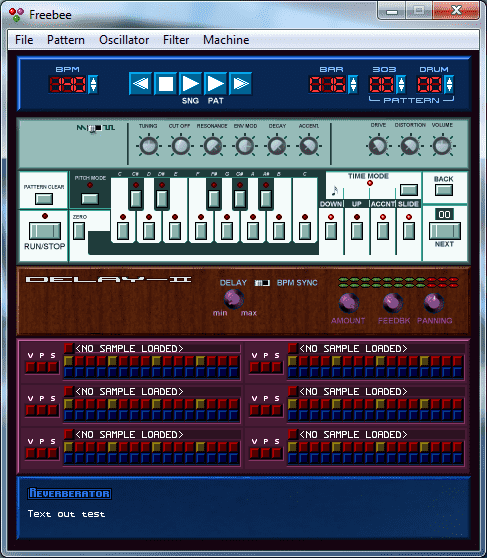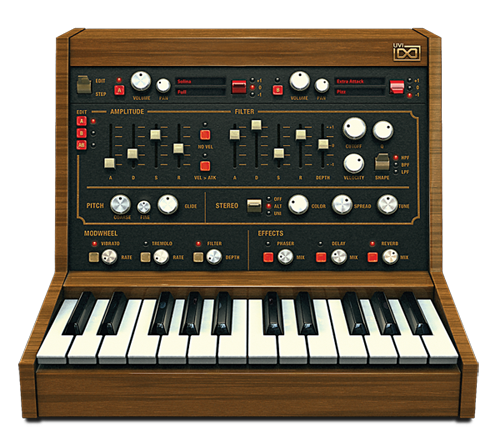Grenoble, France (January 14, 2015)—French music software company XILS-lab has introduced its XILS Vocoder 5000 plug-in. The XILS Vocoder 5000 alters speech, reportedly emulating the sounds of the EMS VCS3 synthesiser and Roland VP-330 Vocoder Plus keyboard.
Analog vocoders typically analyze an incoming signal by splitting it into a number of tuned frequency bands with modulator and carrier signals being sent through a series of tuned bandpass filters, and the plug-in emulates this aspect. Features include 22 bandpass filters and envelope followers; oscillators (modeled from the EMS VCS3); noise generator; frequency shifter; and spectrum analyzer—including a 22×22-pin matrix patchboard, allowing any band of the modulator signal to be connected to any band of the carrier signal.
Additional features include additional filter types; more SLEW RATE modulations; two LFOs — the original analog EMS Vocoder 5000 had only one; in-depth FM AMNT (Frequency Modulation amount) and PWM AMNT (Pulse Width Modulation amount) controls; additional oscillator waveforms; improved sibilance input detector; gate input; also a keyboard for playing melodies or chords; and user-defined presets! The plug-in is available for Mac (32- and 64-bit, AU, AAX, RTAS, VST 2.4, and VST 3 for Mac OS X 10.6 or higher) and PC (32- and 64-bit, AAX, RTAS, and VST for Windows XP, Vista, 7, and 8).

VP-330 From Mars sample library released Jan 11, 2017 Samples From Mars has released VP-330 From Mars, a sample library featuring sounds from the Roland VP-330 analog vocoder/synthesizer.The VP-330 is a vintage, 10. As a comparison, the Roland VP-330 only had 10 frequency bands, with a very musical sound, at the price of much less clarity. The Carrier: You can use the internal analogue Synthesizer as a carrier, which immediately gives the X201 its characteristic and recognisable sound.


XILS Lab
www.xils-lab.com
- Oct 19, 2020 Gforce Software - Virtual String Machine 3.0.0 STANDALONE, VSTi, x86 x64 - Windows - Free Torrent Downloads at vstland.com Vst Crack – Plugins – Loops – Samples – Synthesizers – Daw's.
- May 08, 2012 G-Storm Plugins has released VSP-330 version 2.0 Voice Synth Plus – a recreation of the rare and nearly extinct Roland VP-330 string ensemble and human voice formant choirs. The original Roland VP-330 Vocoder Plus was used notably by Vangelis on his soundtracks for Blade Runner and other movies.

Subscribe
For more stories like this, and to keep up to date with all our market leading news, features and analysis, sign up to our newsletter here.
Well, 909 Day has come and gone. We got a peek at some promising gear, but left wondering again when we can catch our first glimpses of these animals in the wild. YouTube user RetroSound has once again gotten first dibs on a new piece. It's the VP-03, the Boutique version of the rare and almost extinct VP-330 Vocoder with Human Voices and String Synthesizer. It's the one perhaps most notably used in the Blade Runner soundtrack by Vangelis. I was ecstatic about hearing this news of the VP-03, nobody wants the VP-03 to live up the hype more than me...it's like a dream come true. Take a look and listen...Before I give my thoughts on this piece I should note two things. First I am a string synthesizer nerd, and used to use and own a real Roland VP-330 MK-I. I used it lovingly on a few tracks. The VP-330 is a special sound near and dear to my heart, however for financial reasons had to sell it to a lucky friend. Secondly, I have studied its voice and string synthesizer section intimately. I also studied the famed quad-BBD choir ensemble circuit and know exactly what makes it tick. I have used this information to author my own plug-in emulation VST, that uses NO samples BTW, called VSP-330. This VST has gotten many raves and high remarks, despite not reaching a wide audience and I didn't make a version for Mac. DOH! But that is not what we are doing today.
Today we are looking at the VP-03. How does it sound compared to the original? Can users go out and make a fortune selling their own real VP-330 now? If you liked what you heard, and are perfectly content with that - there's no need to read more. My opinion is unnecessary and you'll be perfectly happy.
The VP-03 has A LOT going for it. Out of this world...the Human Voice filters sound wonderful, the string filter - perfect, the quad-BBD Chorus Ensemble effect - perfect! Those of you that want this just for the vocoder will probably LOVE this thing, and may not care for the other features. The VP-03 sounds to me one of the better emulations out there, I applaud what Roland is trying to do but it could sound PERFECT if a couple of issues were addressed with a software update.
Vst Host Download
If you'll notice in the demo, the release time is cranked all the way up on the VP-03. But it just can't maintain a creamy and smooth note release like the real VP-330 can. The notes should hang, and linger a bit longer. Listen to them both again and you will hear this. Maybe it's because the envelope is re-triggering from zero. Or maybe the attack/release curves are not logarithmic like on the original. I'm not sure, but I know something is going on there.
At 3:49 you hear the grating buzz of non-phase-locked oscillators. 'What is non-phase-locked oscillators???' you are probably wondering, and 'that buzz, my God what is making that buzz?' The VP-330 is a direct descendant of organ technology. Synthesizers from the era were capable mostly of a single note polyphony. So Roland, among others, adopted the divide down organ voice technology to a synthesizer format. Heck, the ARP Solina String Ensemble IS the string circuitry ripped straight out of an Eminent organ. So the way the organ voice worked for some, use a single - Master Oscillator - to produce the waveform needed for the very top note in the organ. Another circuit, called the frequency divider, copies that note 11 times and divides it into the other 11 notes in the Top Octave. Subsequent circuitry then divides each note in that Top Octave for all the other octaves. This is why on these machines if an F# goes out, often all the other F# octave keys go dead at the same time.

Why am I telling you all of this? The whole point is, ALL notes in this circuit are directly derived IN PERFECT SYNCHRONIZATION from the master oscillator. C1 is exactly 1/2 the frequency of C2 and in PERFECT PHASE WITH IT. So what's the big deal if 6 days of the week the ear can't pick up on these things anyway. The ONE day of the week we CAN hear this problem amplified greatly is when we run it through a quad BBD Chorus Ensemble. Yes, the quad BBD Chorus Ensemble AMPLIFIES phase discrepancies between two notes played an octave apart. And it doesn't do it just now and then, it does it 99% of the time.
Cubase Vst Download
If Roland could just take care of those two things it would be a perfect unit. I am so serious. Just fix the release time thing and the phase problems and it would otherwise be as close to a perfect emulation as it could ever be. Just modeling the voicing for proper divide down organ behavior might actually save some of the CPU overhead, although it might take more man-hours to see the job through. I know firsthand, this is what I had to do for my own plug-in VST.